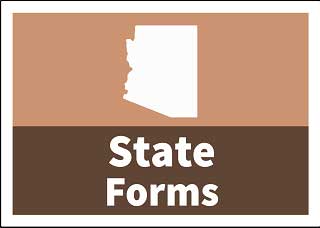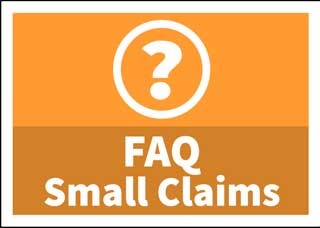The information listed below is for those who are looking for information on how to file or defend against a small claim. Small claims are civil suits that do not seek an award of more than $3,500. They are designed for people to be able to represent themselves in court. Small claims court cases are held in justice court locations.
There are NO juries, NO appeals, and NO attorneys allowed in small claim cases. Attorneys (unless representing themselves) cannot appear, take part in the filing, or represent either side unless everyone agrees to it in writing.
There are NO juries, NO appeals, and NO attorneys allowed in small claim cases. Attorneys (unless representing themselves) cannot appear, take part in the filing, or represent either side unless everyone agrees to it in writing.
What do I need to know before filing a complaint?
A plaintiff is the person who files a lawsuit. The plaintiff must be directly related to or impacted by what is being brought in the claim. They cannot be amended, or else you will have to dismiss the lawsuit and start the whole process over.
A complaint must:
A complaint must:
- Be filed in the correct venue;
- Be clearly written, stating the reasons for the claim; and
- Not have the amount of ALL the claims exceed $3,500. One claim cannot be split into several smaller claim amounts.
Where do I file a small claims case?
Small claims court takes place in Arizona justice courts. The plaintiff (person filing the claim) must file the lawsuit in the justice court precinct where the defendant lives, unless:
- The defendant or defendants live outside of Arizona or when their address is unknown, the claim may be brought in the preceinct where the plaintiff lives;
- A married person may be sued in the justice precinct where the spouse resides unless they are separated;
- If the defendant is homeless or does not have a permanent address, they can be sued in the justice precinct where they are found;
- If the person contracted a debt in one precinct and then moved, they can be sued in either precinct;
- When a contract is signed in one jurisdiction, it can be brought in that precinct or in the precinct where the defendant resides; or
- If there are many defendants who live in a variety of areas, the claim can be brought in any precincts where at least one defendant lives.
What if the lawsuit was not filed at the right court?
If the lawsuit was not filed in the correct justice court, the defendant may file a Motion to Change the Venue of the lawsuit. The plaintiff has 10 days to file a response. If the motion is granted, the court will transfer the case to the proper location. Until the motion is granted, all business must take place at the courthouse where the petition was originally filed.
After a complaint is filed how does it have to be served?
After a complaint is filed the court will issue a summons. The summons, complaint, and Notice to Plaintiff and Defendant, must be served on all defendants. ARSCP 5(a)
Service may be made in 3 ways:
If the date of delivery was not entered by the postal carrier or if it is not readable, service is deemed complete on the date the return receipt is received and filed with the court.
Service may be made in 3 ways:
- Registered or certified mail, with a "return receipt requested." After it is served by the postal service, the plaintiff will get a return receipt that has to be filed with the court within 45 days of filing the complaint. ARSCP 5(b)(1)
- Constable, sheriff, or process server; an affidavit of service must be filed with the court within 45 days. ARSCP 5(b)(2)
- In some courts, the clerk may make service by certified restricted mail, return receipt requested. ARS 22-513(A)
If the date of delivery was not entered by the postal carrier or if it is not readable, service is deemed complete on the date the return receipt is received and filed with the court.
What if I want to hire a lawyer or decide to seek more than $3,500?
Either the plaintiff or the defendant can request that the case be moved out of small claims and into the civil division. You would do this by requesting a transfer at least 10 days before the scheduled hearing date. ARS 22-504(A) and ARSCP 11(a)If you are the plaintiff and do not want the case to be moved out of small claims, you can file a voluntary dismissal if the following stipulations are met:
- The defendant did not file an answer or counterclaim, and
- It has not been more than 15 days since the transfer request was made.
After being served, what does the defendant need to know about filing an answer?
The defendant has 20 days to file a written Answer and mail it to the plaintiff. ARS 22-514 and ARSCP 7 When the defendant goes to file the Answer they will have to pay a fee, but can submit an application for a fee waiver/deferral.
If an Answer or Counterclaim is NOT filed in 20 days, the plaintiff must initiate default proceedings using an Application for Entry of Default. ARSCP 7
If an Answer or Counterclaim is NOT filed in 20 days, the plaintiff must initiate default proceedings using an Application for Entry of Default. ARSCP 7
What is a counterclaim and what do I need to know before filing one?
A Counterclaim says that the plaintiff did or owes something to the defendant. The Counterclaim can be about the issue the plaintiff brought to court or a different event. A Counterclaim:
- Must be filed within 20 days of being served;
- Cannot claim an award of more than $3,500 or else it has to be transfered out of small claims; and
- Cannot be amended. ARSCP 9(a-c)
What if we settle the matter before the hearing date?
If you settle the lawsuit before the hearing date, the plaintiff must tell the court by filing a notice of settlement. ARSCP 4(d)
What do I need to know about my small claims hearing?
- You will be notified by the clerk of the court as to the date, time, and location of the hearing within 60 days of the defendant filing an answer. ARSCP 8 and ARS § 22-515(A)-(B)
- Small claims hearings are conducted by a Justice of the Peace or a hearing officer. The formal rules of procedure, pleading, or evidence do not apply (except for priviledged communications). ARS 22-516(A) If you want a Justice of the Peace and not a hearing officer, you must make that Objection at least 15 days in advance.
- If the date the clerk issues does not work with your schedule, you have to Request a rescheduling 15 days in advance. Your request can be denied if you do not have a valid reason, do not provide documentation for the request, or if it has already been delayed. Emergency requests are possible at any time, but you have to have a very good reason for not filing in the timeframe given. ARSCP 12(b)
What do I need to know about evidence and testimony before a hearing?
Formal rules of evidence do not apply in small claims cases. ARS § 22-516(A) and ARSCP 12(e) The official hearing the matter will consider testimony from both sides, witnesses, documents, and decide the claims and any counterclaims presented. They may also ask questions and allow the plaintiff and defendant to ask questions of one another and witnesses. ARSCP 12(e) Be aware that:
- There is no formal discovery proceeding in small claims court; ARS § 22-516(B)
- Any evidence that is deemed relevant, material, and competent may be admitted; ARS § 22-516(A)
- If the Justice of the Peace or hearing officer thinks that the evidence does not come from a reliable source, will cause confusion, creates unfair prejudice, or is a waste of time it is likely that it will not be admitted. ARSCP 12(e)
What happens if someone does not appear for the hearing?
The plaintiff and defendant are both required to appear at the hearing.
- If the defendant does not show, the court will consider the evidence and may award the judgment to the plaintiff.
- If the plaintiff does not show, the court may dismiss the lawsuit.
- If no one appears, the court will dismiss the complaint and counterclaims without prejudice. ARSCP 12(c)(1)-(3)
When should we expect to get receive a judgment on our small claims case?
A judgment is the written court order deciding the outcome of a case; it is legally binding and cannot be appealed. ARSCP 15(a)
- The Justice of the Peace or hearing officer has the option of giving their judgment at the end of the hearing or within 10 days after it ended. ARS § 22-520(A)
- After the judgment is entered, the court has 5 days to mail a copy of the judgment to everyone. ARS § 22-520(B)
- When money is owed, it must be paid immediately after the judgment is rendered. ARS § 22-520(D)
- If the amount has not been paid in full the matter may be moved out of small claims court and placed in justice court where further action would be conducted.
- If you are unable to locate the other individual to make a payment or satisfy the judgment, you can file a motion to compel satisfaction of the judgment. If the court grants your motion, the judgment is satisfied.
What does it mean to have a judgment vacated?
A vacated judgment cancels or voids the court order. For Motions to Vacate a small claims judgment, attorneys may be involved in the proceedings. If a judgment is rendered, the court may relieve either the plaintiff or defendant from the judgment for one of the following reasons:
Once the Motion to Vacate is filed, it has to be delivered to the opposing side on the same day. They then have 15 days to file a written response and must deliver a copy to the person who filed the motion on the day the response was filed. ARSCP 16(c)
- there was a mistake, oversight, omission, surprise, or excusable neglect;
- fraud, misrepresentation, or other misconduct;
- the judgment is void;
- the judgment has been satisfied, released, or discharged; applying the judgment is no longer equitable; or it is based on an earlier judgment that was reversed or vacated;
- any other justifiable reasons. ARSCP 16(a)
Once the Motion to Vacate is filed, it has to be delivered to the opposing side on the same day. They then have 15 days to file a written response and must deliver a copy to the person who filed the motion on the day the response was filed. ARSCP 16(c)




